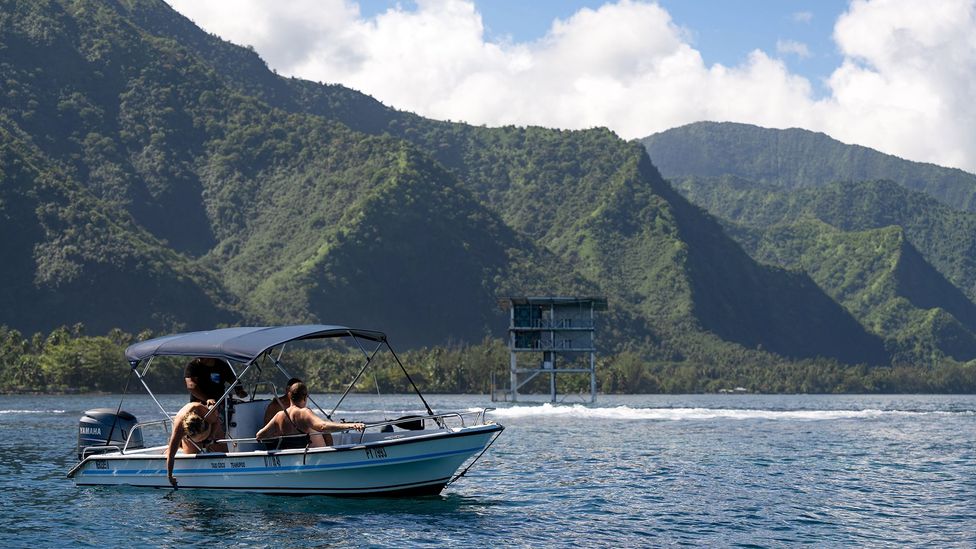The village of Teahupo'o, located on the island of Tahiti in French Polynesia, is considered remote even by island standards. Nestled between verdant mountains and a clear lagoon, the community is surrounded by natural beauty. Beyond the edge of the lagoon is one of the world's best reef breaks – a wave that breaks over a coral reef – which is now testing Olympic surfers vying for gold. The surfing events are the culmination of a year of extensive construction in Teahupo'o and the surrounding area in the run-up to the 2024 Olympic Games.
The town's marina was renovated, while temporary white tents have been set up close to the shore. The aluminium judging tower now stands stoically in the lagoon, dressed in Paris 2024 colours. The tower was completed earlier in 2024, and has proven to be controversial. It attracted worldwide attention in 2023, when local residents and surfers came together to protest the build, arguing that it would damage the reef.
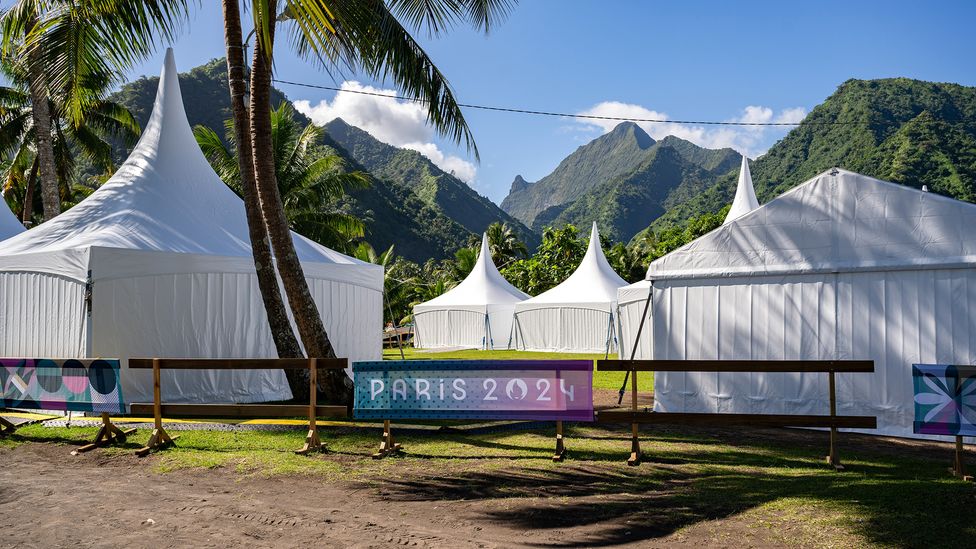
White tents have been erected on the island for the 2024 Paris Olympics (Credit: Atea Lee Chip Sao)
Lorenzo Avvenenti, Teahupo'o resident and surfer, actively protested the construction of the new tower.
"We're blessed to have these natural riches," he says. "All these places in the world with big money, big salaries… they're not as rich as me. We can't keep letting people come here and messing with our reef, our natural resources."
Building on the reefCindy Otcenasek is a Teahupo'o local and president of the Vai Ara O Teahupo'o environmental association. Her association has spent the last three years trying to ensure that any Olympic construction comes with local input and minimal environmental impact.
Otcenasek says that the local community were given very little notice about the construction of the brand new tower – they only found out in August 2023, just a few months before the build was to begin. The association's request for an environmental impact study before the actual construction was not granted, according to Otcenasek.
The judges' tower crisis really brought us back down to earth – Barbara Martins-Nio
Otcenasek says that if the Olympic committee had been more open and considerate of local wishes, "it would have been a noble response, and something we could have celebrated together – that such a big organisation had shown respect to a population as small and as isolated and as far from Paris as we are".
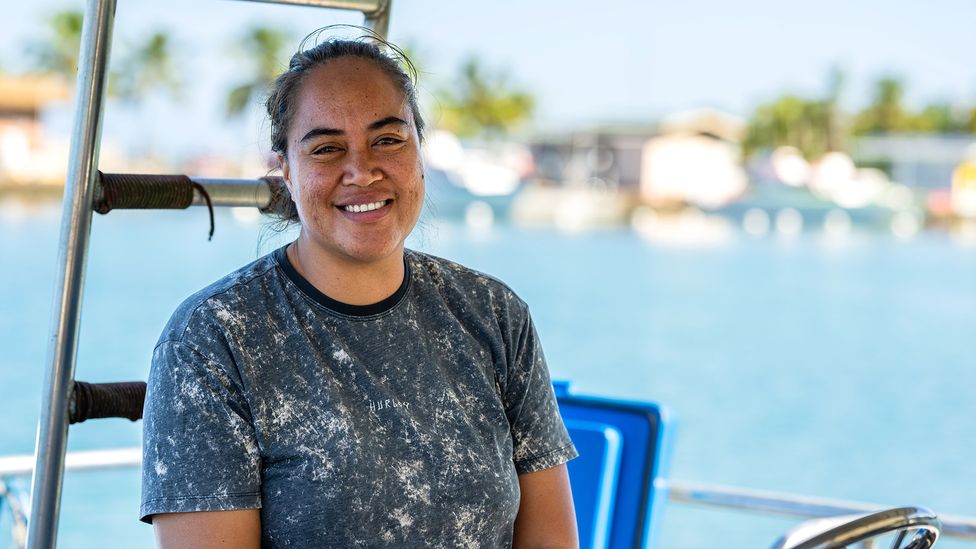
Cindy Otsenasek has been a pivotal figure in monitoring the Olympics' environmental impact on the island (Credit: Atea Lee Chip Sao)
The outcry over the judges' tower was a turning point in the community's push back. Olympic officials began to pay attention to local concerns.
"The judges' tower crisis really brought us back down to earth and helped us realise that we needed to be in direct contact with the local residents," says Barbara Martins-Nio, the event general manager of the Olympic organising committee in French Polynesia.
The aluminium tower that now stands in the lagoon is the same size as the original wooden one, which previously had been used for World Surf League competitions. After the resistance from local residents and the public outcry, a pared-back version of the originally planned tower was built. The new tower's foundations are lighter and more environmentally friendly than what was previously planned, according to both Olympic officials and locals.
Lack of communicationOne main cause of the discord between the Teahupo'o community and Paris 2024 was the lack of communication channels between the parties, and the lack of clarity about issues such as the tower.
Martins-Nio says that after the crisis, the Olympic committee made a renewed effort to work together with local residents, the different districts on the island, the French Polynesian President and government departments.
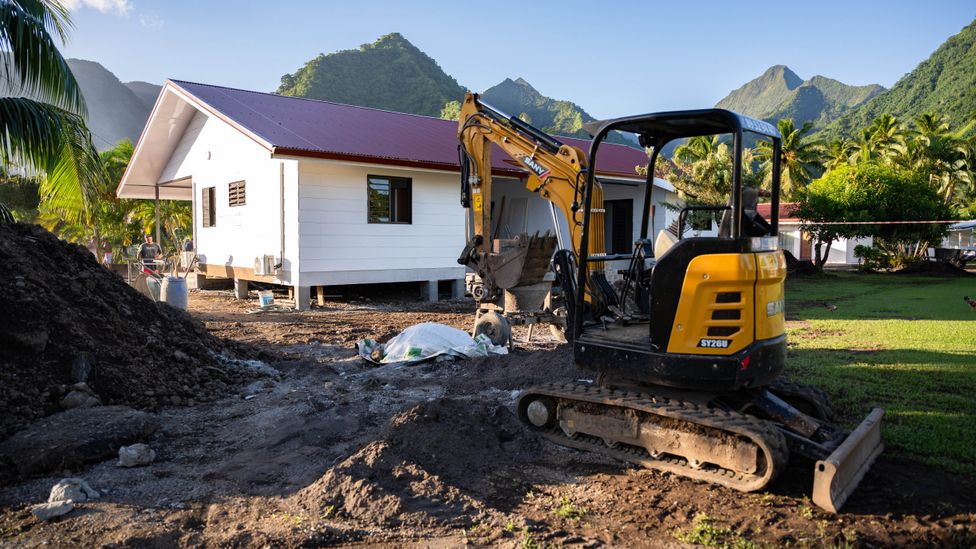
Ongoing construction of the now finished new marina of Teahupo'o (Credit: Atea Chip Lee Sao)
As part of that effort, the French Polynesian ministry of youth and sports, in conjunction with local environmental consulting firm Pae Tai-Pae Uta, set up a team to evaluate the damage caused during construction of the tower and to monitor the reef.
Charles Egretaud heads the team at Pae Tai-Pae Uta and says that the damage caused to the reef during construction was minor. He worked with four young people from Teahupo'o, two of whom were fishermen, to check the reef several times a week after the tower was built. They found that there seemed to be no ongoing damage to the reef itself. However, a bigger issue was the increase in algae that they noticed since building began. There was algae on the reef to begin with, but Egretaud worried this increase could be harmful. Coral reef damage, alongside pollution and environmental changes to reef ecosystems, can cause algal dominance.
Studies have shown that damage to reef ecosystems and proliferation of algae can increase the risk of ciguatera, one of the long-term environmental impacts Otcenasek and her association are concerned about. People can get ciguatera poisoning after consuming tropical reef fish with high levels of ciguatoxin. Ciguatera poisoning can vary in intensity and can include symptoms such as diarrhoea, vomiting and fatigue. And in Teahupo'o, many people fish regularly, to sell or to feed their families.
"If there was an increase in ciguatera it would be a long-term impact; it can take 15 to 20 years after damage for ciguatera levels to rise in fish," Egretaud says. It's an issue that affects many islands in French Polynesia, he says, and it's something officials will need to follow up in Teahupo'o.
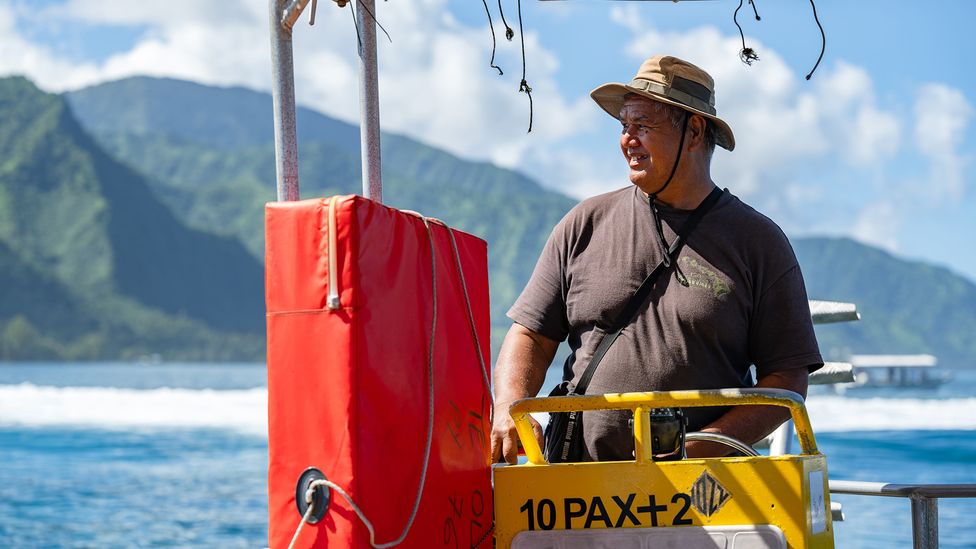
Timothée Faraire, a local taxi boat driver, says he is receiving very little pay for captaining his boat for Olympic officials (Credit: Atea Chip Lee Sao)
Locals feel they made progress over the reef tower, and it wasn't the only time they fought to protect their local environment in the run-up to the Games.
Otcenasek says that government and Olympic officials proposed several large-scale construction projects over the years, including one that would dredge and reclaim land 300m (980ft) out from the shore into the lagoon. Locals fought back against the plans, organising protests and online petitions. Those projects were abandoned.
Other concessions that were made include housing the athletes on a cruise ship instead of building new accommodation, and housing all other guests such as media and spectators in local homes or locally owned guesthouses, and capping the number of spectators allowed into Teahupo'o.
"The majority of residents have always been in favour of the Olympics but they didn't want any material legacy [permanent structures] except for the marina renovation and the new pedestrian bridge," Otcenasek explains from her boat anchored to a jetty behind her house, speaking to BBC Future Planet before the surfing events take place. In the background, a large crane and construction workers are busy working on the marina. Just visible on the opposite side is the wave and the judges' tower.
One of the developments Olympic organisers tried to bring to the community was treated water. The water that comes out of islanders' taps is fresh spring water. Officials offered houses in Teahupo'o the option to have treated water instead, but many in the community were against the idea.
"Teahupo'o is a district where there's water everywhere, good, clean spring water filtered naturally through the rocks," says fisherman and local elder Peva Levy.
In this case, the communication and direct contact between Olympic officials and island residents enabled both parties to come up with a solution that everyone was happy with.
"We had a big meeting with the local population, and no one wants [the chlorinated water]," says Tetuanui Hamblin, mayor of the district of Taiarapu-Ouest, which includes Teahupo'o. "So today only the Olympic zones have access to chlorinated water. The houses outside these zones have the local spring water."
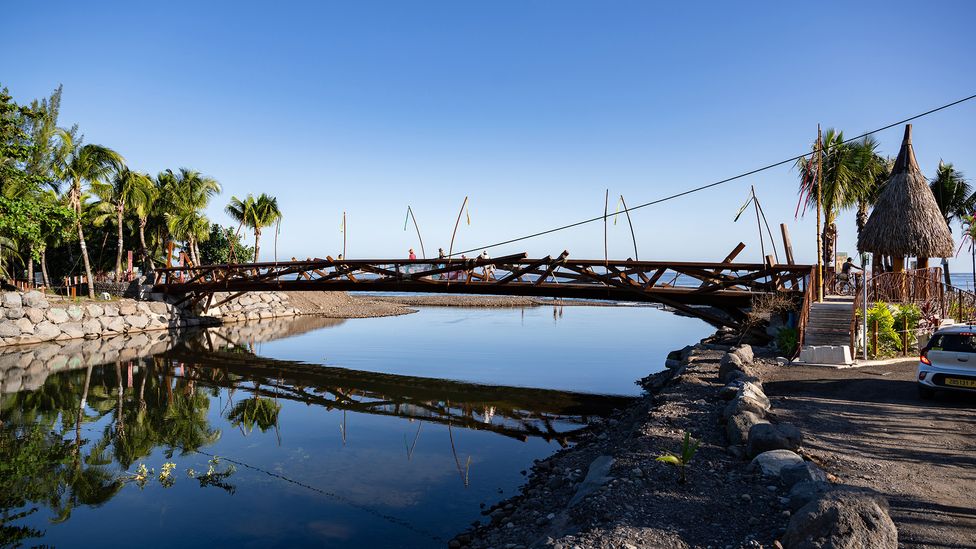
The new footbridge in Teahupo'o is now operational and open to the public. The structure allows pedestrians to safely cross the Fau'oro River (Credit: Atea Chip Lee Sao)
There are mixed feelings about the Olympic legacy among locals – while many are excited to welcome the prestigious event to their hometown and look forward to the economic benefits, they've also accepted that it has come with some drawbacks.
"I'm not for or against the Olympics," says Annick Paofai, Teahupo'o resident and business owner. Unlike some of her neighbors, Paofai wishes the events would have a more permanent legacy. "We could've had a nice Olympic village with infrastructure that could've been used for school camps or tourism but most of the locals here didn't want it. For me, that's a shame," says Paofai.
Instead of the permanent residential structures that come with most Olympic villages, Teahupo'o has the Rose Domaine, a fenced area filled with temporary white tents about a block back from the shore, destined to become a catering space during the Games. The area of 3,000 square metres (32,000 sq ft) sits between residential homes and agricultural land. It includes a restaurant, medical area, gym and rest area for athletes. All the structures are to be dismounted and removed after the Games are done.
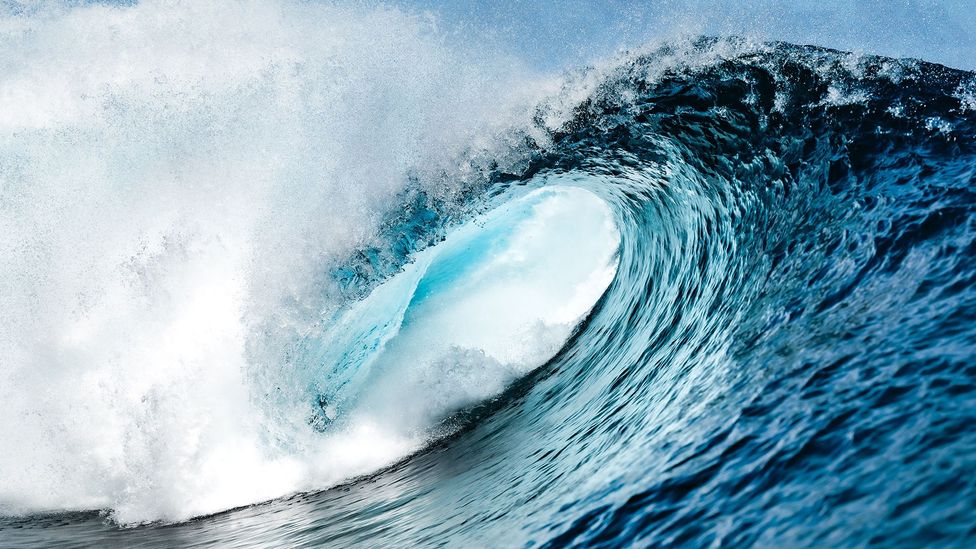
Teahupo'o is one of the best reef breaks in the world, thanks to the island's coral reefs (Credit: Atea Chip Lee Sao)
The Rose Domaine was built on a plot that was previously used to plant taro, a starchy purple vegetable and traditional staple food. In order to prepare the marshy land for use, 110,000 cubic metres (3.9m cubic feet) of earth were excavated and then backfilled with gravel.
Originally, community advocates wanted the land for the Domaine Rose returned to agricultural use. The area once produced 50 tonnes of taro and other vegetables a year, which were used as food for local schools and sold in grocery stores. According to the French Polynesian Institute of Statistics, the number of local farmers is decreasing, and Tahiti now imports more than 80% of its food.
"It'd be great if it returned to agricultural land because that's how the local population lives," says Otcenasek.
CARBON COUNT
The emissions from travel it took to report this story were 30kg CO2. The digital emissions from this story are an estimated 1.2g to 3.6g CO2 per page view. Find out more about how we calculated this figure here.
However, Hamblin says that they're now looking at other possibilities for the Rose Domaine after the Olympics.
"It costs a lot of money to backfill the land and if they have to remove all the gravel it'd cost the same amount, so we're working with the Olympic committee and the government to see if we could build something like greenhouses or even a sports field… something for our farmers and our young people," says Hamblin.
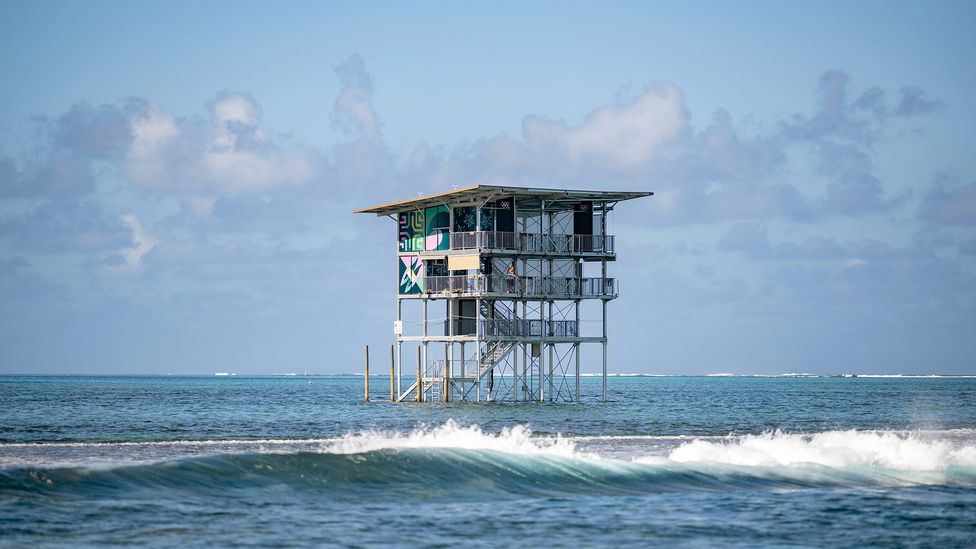
The aluminium judging tower was a point of controversy, but it was scaled down after local pressure (Credit: Atea Chip Lee Sao)
The government unit Tū'aro Nui, which was set up specifically to supervise the Olympic surfing events, recently deployed a team to survey the local population in Teahupo'o and surrounding areas to ask for their opinions on what should happen with the Rose Domaine. The majority of residents were in favour of developing the area into a sports complex with a gym, skate park or sports field, or keeping it agricultural, either returning it to a taro field or building a nursery or greenhouse. Some, however, told BBC Future Planet they were sceptical that the area would be developed any time soon.
Despite the initial outcry over the judges' tower, many locals have embraced the Olympics and the economic opportunities it presents. But the long-term legacy of the site will only become clear long after the last Olympic competitor has exited the final wave.
SIGN UP TO FUTURE EARTH
Sign up to the Future Earth newsletter to get essential climate news and hopeful developments in your inbox every Tuesday from Carl Nasman. This email is currently available to non-UK readers.
In the UK? Sign up for newsletters here.
Other locals are disappointed that there wasn't more direct economic benefit for the community. "The Olympics aren't doing that much for us, the locals aren't benefiting that much. I'm only getting paid 10 euros an hour to captain my boat for the Games," says Timothée Faraire, a local taxi boat driver.
However, Olympic event manager Martins-Nio is quick to argue that there has been a significant boost to the local economy. "We've recruited 90% [of Olympic staff] locally and allowed local business to make very good profits… our accredited invitees are staying with local residents instead of five-star hotels." Martins-Nio says.
"I hope that in the end we'll have proved that we listened and adapted, and created almost a new model for the Games, one that's better integrated with the environment and the local people."
More like this:
• How heat transformed the Olympics
• What lurks beneath Olympic waters?
• The superbugs lurking in seas and rivers
Poetai Parker, a local resident and police officer, is busy finishing up the work on two two-bedroom houses on his land that he plans to rent out on Airbnb during the Olympic Games. Parker estimates that there have been 50 new houses constructed in Teahupo'o just for the Games.
The Olympics are a "great opportunity" for Teahupo'o and for French Polynesia, Parker says while standing outside his newly constructed Airbnb. "It’s a great thing as long as we take care of the environment, nature and the population there’ll be no worries."
--
For essential climate news and hopeful developments to your inbox, sign up to the Future Earth newsletter, while The Essential List delivers a handpicked selection of features and insights twice a week.
Want to read more about the Olympics? Sign up for Medal Moments, your free global guide to Paris 2024, delivered daily to your inbox throughout the Games.
